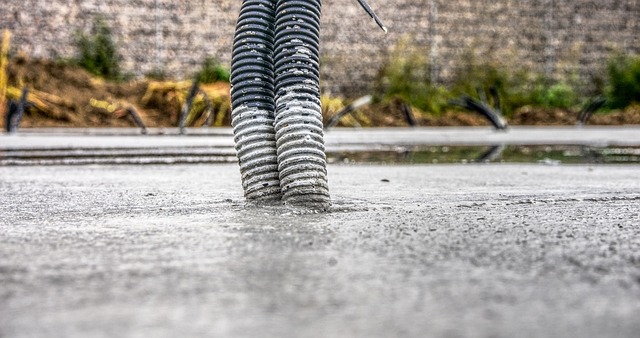Understanding foundation crack causes (settlement, soil conditions, structural defects, tree roots) and types (hairline to severe heave/sinkage) is crucial for effective fixing. Evaluate severity by measuring width, length, depth, and location. Tailored approaches include hydraulic cement for small cracks, concrete or polymer compounds for larger ones, and underpinning/piering for significant settlement. Right materials – epoxy for tiny cracks, traditional concrete for wider ones – ensure lasting repairs. Regular inspections, moisture control, drainage, and waterproofing prevent future cracks.
Foundation cracks can be both cosmetical and structural issues, necessitating prompt attention. This comprehensive guide delves into the world of fixing foundation cracks, covering everything from understanding their causes and types to evaluating severity and choosing the right repair materials. We outline effective repair methods for various crack scenarios and provide a step-by-step guide to ensure lasting solutions. Additionally, we offer preventive measures and maintenance tips to help avoid future foundation damage.
Understanding Foundation Cracks: Causes and Types

Foundation cracks can be a concerning sight for any homeowner, but understanding their causes and types is the first step in effective fixing foundation cracks. These cracks can result from various factors, including settlement, soil conditions, structural defects, or even tree roots. Settlement cracks are common as structures adjust to load bearing over time, while structural cracks may indicate more serious issues like improper construction or shifting soil beneath the foundation.
There are several types of foundation cracks, each requiring specific attention. Hairline cracks are usually non-structural and can be caused by minor settlement. Larger cracks, however, could signal more severe problems such as heave (when soil expands) or sinkage (when soil compresses). Identifying the type and cause of the crack is crucial in determining the best course of action for fixing foundation cracks.
Evaluating the Severity of Structural Cracks

Evaluating the severity of structural cracks is a crucial step in fixing foundation cracks. Start by assessing the width and length of the crack, as well as its depth. A crack that is wider than 1/8 inch (3 mm), longer than 10 feet (3 meters), or deeply penetrating into the foundation should be taken seriously. These indicators suggest potential structural instability and may require professional intervention.
Consider also the location of the crack. Cracks appearing along joint lines, corners, or in load-bearing walls are more concerning than those found in non-structural areas. Additionally, observe if the crack is widening over time or if there are signs of settlement or unevenness in the building. These factors can help determine whether minor repairs will suffice or if more comprehensive fixing foundation cracks methods are necessary to ensure the structural integrity and longevity of your property.
Repair Methods for Different Crack Scenarios

When it comes to fixing foundation cracks, the approach varies depending on the type and severity of the damage. For small, hairline cracks, a common repair method involves injecting a hydraulic cement mixture through pre-drilled holes. This process effectively fills and stabilizes the crack, preventing further erosion. Such micro-cracks often appear due to normal concrete shrinkage or minor settlement, and their timely fixing is crucial for maintaining structural integrity.
For larger cracks, especially those wider than 1/4 inch, a more extensive repair might be required. This could include replacing the damaged portion of the foundation with new concrete or using specialized products like polymer-based patching compounds. In cases where the crack has led to significant settlement or heave, underpinning or piering may be necessary. These methods involve installing support structures beneath the foundation to stabilize it and prevent further movement.
Choosing the Right Materials for Foundation Repairs

When it comes to repairing foundation cracks, selecting the appropriate materials is paramount for long-lasting results and ensuring the structural integrity of your home. The choice of materials largely depends on the type and severity of the cracks, as well as local climate conditions. For small, hairline cracks, a high-quality epoxy injection might be sufficient. This method involves injecting a liquid epoxy into the crack, which hardens to create a strong bond, effectively preventing further fragmentation.
For wider or deeper foundation cracks, especially those indicative of more significant structural issues, traditional concrete repair compounds are recommended. These materials offer superior compressive strength and durability, making them ideal for repairing larger voids and cracks. Moreover, the application process involves mixing a cement-based compound with water before filling the crack, ensuring a strong and stable repair that can withstand various environmental stresses, thereby fixing foundation cracks effectively and permanently.
Step-by-Step Guide to Fixing Foundation Cracks

Fixing foundation cracks is a crucial step in maintaining the structural integrity and longevity of your home. Before beginning, assess the crack’s severity: narrow, hairline cracks might only require monitoring, while wider ones could signal a more significant issue. If the crack is less than 1/4-inch wide, you can often fix it with appropriate epoxy injections or hydraulic cement.
For wider cracks (over 1/4-inch), professional intervention may be needed as they indicate potential foundation movement. A step-by-step guide involves preparing the crack by cleaning and drying it thoroughly. Then, apply a suitable epoxy or cement, ensuring complete coverage. Use a brush or trowel to fill the crack, followed by a smoothing tool for an even finish. After curing, inspect for any signs of new cracks, indicating ongoing foundation problems that require further attention.
Preventive Measures and Maintenance Tips

Preventing foundation cracks is key to avoiding costly repairs later on. Regular inspection is the first step; checking for any signs of damage or movement in your home’s structure, especially in areas prone to shifting like around windows and doors. Addressing small issues early can stop them from escalating.
For maintenance, moisture control is vital as it contributes significantly to foundation problems. Ensure proper drainage around your home, fix leaks promptly, and consider using a dehumidifier in damp areas. Applying a waterproof sealer to the exterior walls and foundation can also provide an extra layer of protection. Regularly cleaning out gutters and downspouts prevents water from pooling near your foundation, reducing the risk of cracks forming or worsening over time.
